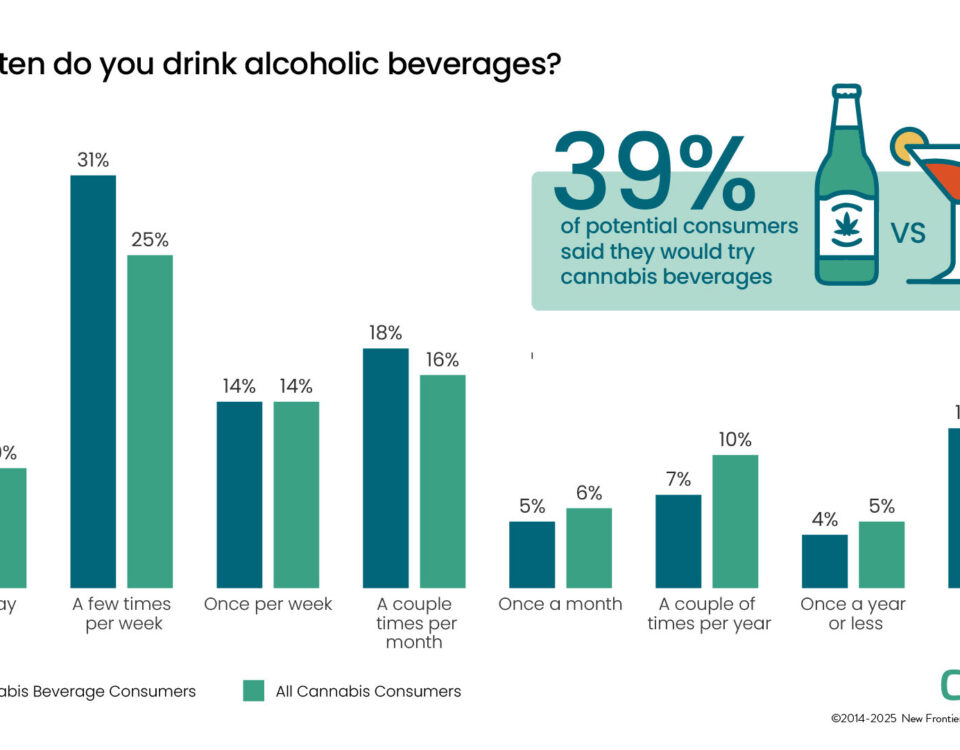Between A Prized Patent and Hot Air: The Search for a Cannabis Breathalyzer Device Continues

Growing the Market: Plants Under Cultivation Underscore Legal Cannabis’ Promise
November 8, 2021
New Estimates Project Mexico’s Legal Cannabis Sales to Reach USD $2.1 Billion Within Four Years of Retail Market Launch
November 17, 2021By J.J. McCoy, Senior Managing Editor, New Frontier Data; and Noah Tomares, Research Analyst, New Frontier Data
Among key policy issues regarding the federal legalization of cannabis are public safety concerns about drugged drivers. Not only do scientists and lawmakers disagree about the legally determined limit to which THC found in blood, breath, or saliva would constitute impairment, but to date no effective roadside test has been proven for reliable accuracy or effectiveness in detecting THC.
The search is on in earnest, though. While potential demand for such devices would represent a sizable market, a bankable product has so far remained a veritable holy grail. There are now 38 states (and Washington, D.C.) having legalized cannabis in some form for medical use, with 18 of those states (and D.C.) having legalized adult-use programs, and New Frontier Data projects that there are 44.6 million cannabis consumers in the United States. By one estimate, the global drug testing market was valued at $8.1 billion in 2020, and is only expected to increase throughout the foreseeable future. As new states legalize and recreational marketplaces open, regulators and law enforcement alike will need to adjust to a new paradigm.
Given the natural social comparisons to alcohol, and law enforcement’s long familiarity with deployjng breathalyzers in the field, manufacturing developers have largely focused on devising a breathalyzer-style device, but perfecting any prototype has proven to be elusive.
Saliva-testing devices are commonly rife with controversy. Experts argue that drug concentrations in oral fluid fail to accurately reflect that in one’s bloodstream. First, there are wide individual variations in the ratios of oral fluid to blood concentration. Additionally, and particularly significant per THC products, an individual’s oral cavity may maintain disproportionately high concentrations of a substance, particularly after ingesting an edible or smoking. Due to such concerns, many argue that drug concentration in blood cannot be accurately estimated based on oral-fluid analysis. Such doubts are leading other companies to explore and develop alternate technologies for quickly and correctly detecting THC in the body. THC-COOH, a metabolite of THC detectable in urine, reportedly can remain in the body and be detected in urine for more than 7 days after a single use. Among more frequent consumers, metabolites could be detected between 30-60 days after an individual’s last consumption. Even tests targeting THC in oral fluid could still be positive up to 24 hours after an individual consumed cannabis. Previous testing has proven limited in translating the chemical composition of cannabinoids, which may linger in one’s bloodstream for more than a week after consumption, marking false positives.
For several years, California-based Hound Labs has been hot on the trail to perfect a breathalyzer. Founded in 2014, by 2019 it had raised $65 million of investment, and in September the company announced having raised an additional $20 million to scale operations in preparation for a Hound Marijuana Breathalyzers’ Q1-2022 commercial launch. CEO Dr. Mike Lynn explained that existing tests to detect metabolites rather than THC cannot distinguish between a consumer who “smoked cannabis legally and responsibly at a BBQ on Friday night, versus their colleague who smoked Monday morning on the way to work.” The company notes that THC is only breath-detectable for up to three hours after usage, which might eliminate uncertainty plaguing other tests, and has claimed that its Hound Marijuana Breathalyzer is 1 billion times more sensitive than an alcohol breathalyzer.
The University of Pittsburgh reportedly developed a cannabis breathalyzer to test for the presence of THC that is more accurate than the current standard of using mass spectrometry, and last month researchers at Harvard University’s Biomedical Engineering Program developed a rapid assay for oral THC analysis called EPOCH (express probe for on-site cannabis inhalation). The quick, on-site unit reportedly allows an assay completion within 5 minutes. The researchers aim to eventually expand their test to detect other drugs, such as oxycodone or other synthetic opioids.
Nevertheless, experts suggest that whenever a roadside THC-detecting device may finally be proven accurate and reliable, questions will remain about the extent to which, and for how long, THC may impair driving and complex physiological components including judgment, response, and general skill. Across the country, lawmakers, scientists, police, and consumers not only disagree about a precise level at which THC concentration constitutes functional impairment, but whether any single limit exists. Whereas a legal blood alcohol content (BAC) limit of .08 is reportedly based on over 30 years’ scientific evidence, comparable studies regarding the effects of THC on driving impairment are both sparse and contradictory. Defining cannabis impairment will require active educational efforts and involvement from the industry; otherwise, policy experts and industry stakeholders fear that outmoded assumptions or biases relative to consumption and intoxication will guide the rulemaking endeavor.
Legal experts fear that as police departments nationwide become increasingly eager for the technology, risks also increase for their using marijuana breathalyzers to test for recreational marijuana before all the concerns are addressed. That means that courts, prosecutors, and criminal defense attorneys, respectively, will play important roles in evaluating the devices on a case-by-case basis, and puts a premium on industry stakeholders’ engagement with lawmakers and regulators to responsibly reconcile the variables.




